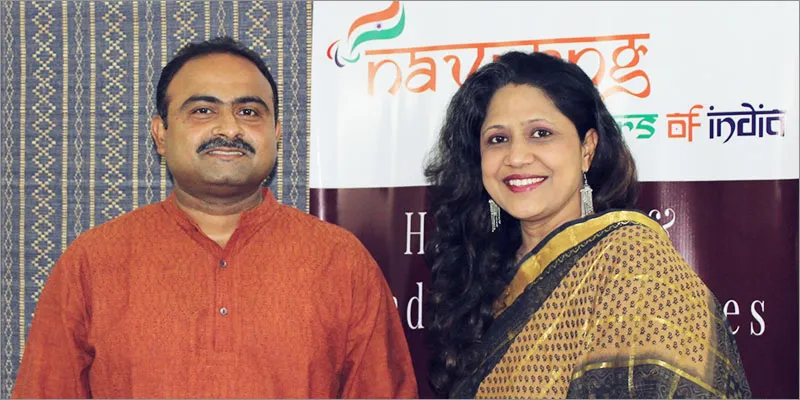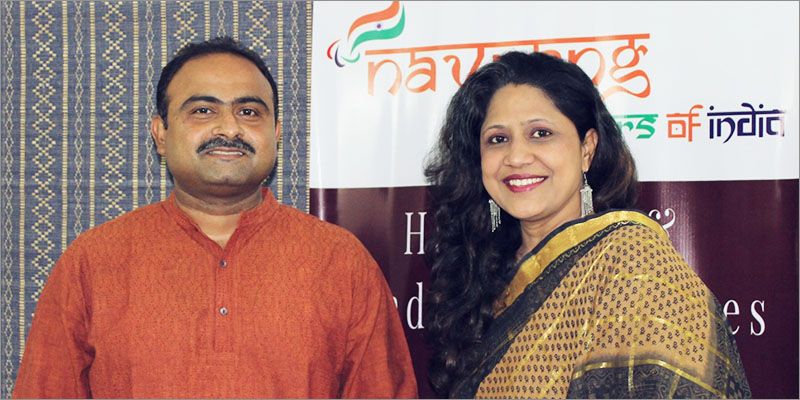How Navrang is helping village-based craftsmen and promoting their products
After the government’s 'Make in India' campaign, the Planning Commission proposed the ‘Handmade in India’ campaign, a comprehensive handloom policy that will leverage synergy between handlooms, handicrafts and khadi and village Industries, creating a single brand to sell such goods to niche markets through e-commerce.
The demand for handmade products is returning. They have caught the fancy of high net worth individuals (HNIs), at least in metro cities. They don’t mind spending extra bucks on well-made handicraft items or handloom products. The success of Fabindia, a chain store that sells garments handmade by craftspeople across rural India, is an epitome in this segment.

With this concept in mind - providing genuine handmade items to the consumers - Sonal Gupta and Rajarshi Guha conceived the idea of Navrang. “The accessibility of handicrafts and handloom products, as well as the availability of skilled workers, has drastically reduced. Counterfeit products are available large scale. So Navrang was conceived primarily with the idea of conserving rich Indian tradition and culture,” says Rajarshi, Co-founder, Navrang.
Navrang has been bootstrapped by Sonal and Rajarshi. The duo started the venture with an initial investment of Rs 25 lakh. The outlay has been spent mainly on procurement of products, setting up of an office in Delhi and website development. Until now, no funding has been raised by the promoters.
Exclusivity maintained
Navrang claims to be the first and only portal to focus exclusively on traditional and handcrafted sarees procured from different regions of India.
“We source products from local artisans. This means we get Phulkaris from Patiala and Kantha from Shantiniketan. We have acquired government registered weavers/artisans, who provide authentic handloom and handcrafted products. This way, we can get original products at a reasonable price. Customer acquisition and marketing costs are being kept low, which will help us in becoming profitable soon. Sales will be done through Internet and community marketing,” says Sonal, Co-founder, Navrang.
What differentiates Navrang from other platforms, he says, is that most available platforms are following the marketplace model. They do not focus on exclusive handloom and handcrafted fabric items. Moreover, they do not source directly from artisans, and the authenticity of the product is not guaranteed. Navrang sources directly from government listed weavers and also focuses on national award winners.
“Our objective is to cover all the states of India. As of now, we are covering seven states. We wish to offer to our customers hand-woven and handcrafted textile work from any state in India by the end of this year,” says Sonal.
Meeting challenges
In getting original and authentic products, the venture faces the challenge of interference from middle men. The accessibility of the remote villages where the actual handwork is available is also quite bad.
Navrang also faces competition from well-funded platforms who can market their products well. However, it claims to have a completely new vision; it is looking to provide authentic handloom products.
Venture flourishes with Industry
India is the largest manufacturer of handmade fabrics. Further, the awareness surrounding handloom and handcrafted textiles is increasing, which provides fuel for growth.
According to Rajarshi, the handloom sector has a unique place in the country’s economy. This sector has sustained by transferring skills from one generation to another. The strength of the sector lies in its uniqueness, flexibility of production, openness to innovations, adaptability to the supplier’s requirement and the wealth of its tradition. Due to various policy initiatives, interventions like the cluster approach, aggressive marketing initiatives, and social welfare measures, the handloom sector has shown positive growth, and the income level of weavers has improved.
The Govt. of India passed a bill to protect handloom and handcrafted items from being copied by power looms. This is called “Reservation Articles for Production Act 1985”. This gives growth opportunities to ventures which are promoting handmade products.
“The increasing demand for handicraft and handloom products, and the dearth of the right kind of suppliers in the market, increase the importance of ventures like Navrang. We aim to meet market demand. And we believe that the current environment will support the growth of both the industry and our venture,” says Rajarshi.






